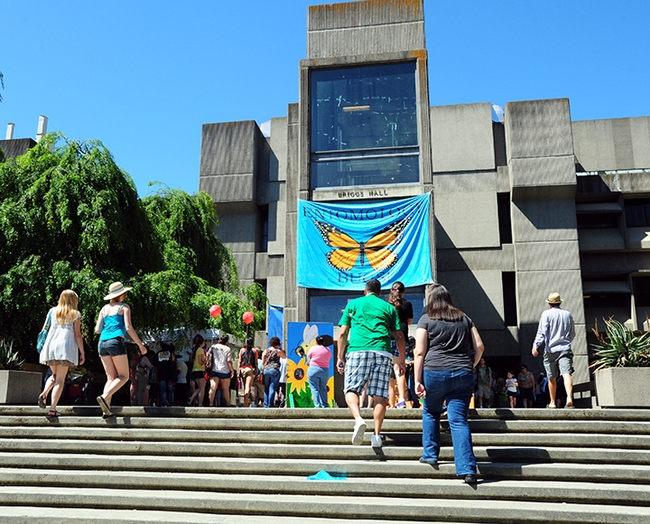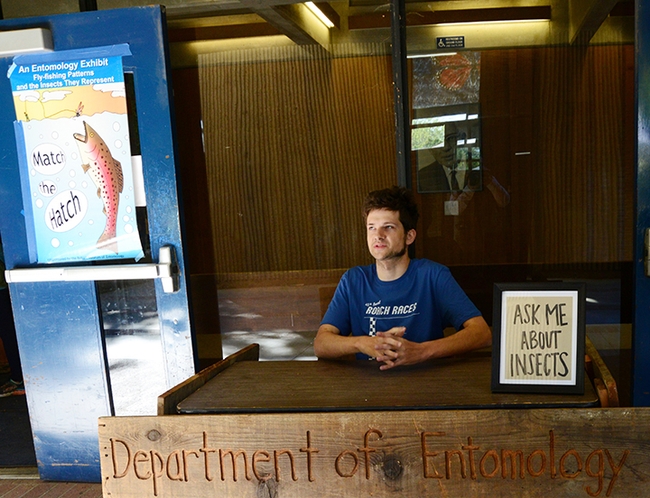- Author: Kathy Keatley Garvey
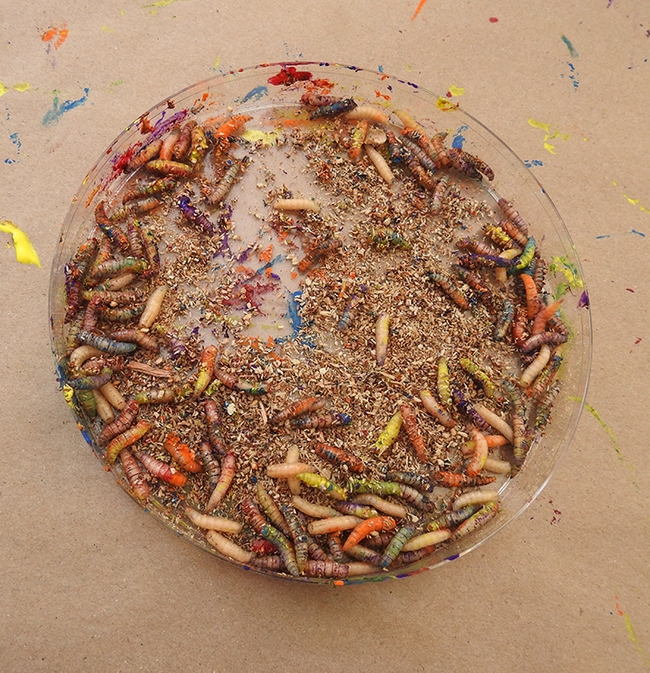
Or at least, it's a conversation piece!
Maggot Art is a big draw!
Scores of youngsters and adults--most with great glee but some with a little trepidation--participated in the Department of Entomology and Nematology's annual Maggot Art event, this time switched from the Briggs Hall courtyard to the Green Hall courtyard.
Hudson Carr, 4, of Los Angeles--with Mom Angie Velazquez assisting, and Dad Justin Carr taking photographs-- eagerly picked up a maggot with forceps, dipped it into green water-based, non-toxic paint and watched it crawl around on his white paper. Then he picked up another, dipped it into yellow paint, and guided it on the paper. A few more colors and a few more maggots...and...Voila! Maggot Art!
His mother, a UC Davis alumnus (she majored in psychology and sociology and participated in the California Aggie Marching Band-uh!, now known as the UC Davis Marching Band), says Hudson has always like bugs. His smile confirmed it. Then the family was off to the Bohart Museum of Entomology to see more insects.
Meanwhile, entomology graduate student Elizabeth Slagboon of the Ian Grettenberg lab, and undergraduate student Summer Calvache, an animal biology major, offered assistance and encouragement to the Maggot Art artists.
Maggot Art has been a traditional part of the UC Davis Picnic Day since the early 2000s.
Rebecca O'Flaherty, a former graduate student of forensic entomologist Robert Kimsey, coined the educational teaching curriculum, "Maggot Art," back in 2001 when she was studying at the University of Hawaii. She was rearing blowflies for her forensic research and wanted an activity to draw the interest of elementary school students. She also wanted to generate interest and respect for forensic entomology.
Her Maggot Art quickly drew national interest. The CSI television show featured one of her works, “Ancient Offering,” which hung on the permanent set in Gil Grissom's office. O'Flaherty also exhibited her work at art shows, including a two-month exhibition at the Capital Athletic Club, Sacramento, in 2007.
The Metropolitan Museum of Art or Guggenheim Museum may not be ready to showcase the UC Davis Maggot Art, but the artists--and the maggots--are the stars of social media, family videos and refrigerator art.

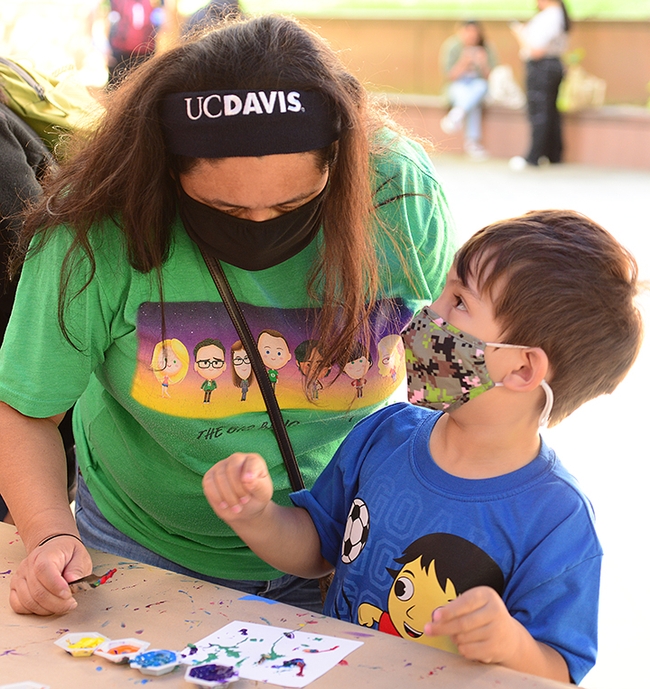
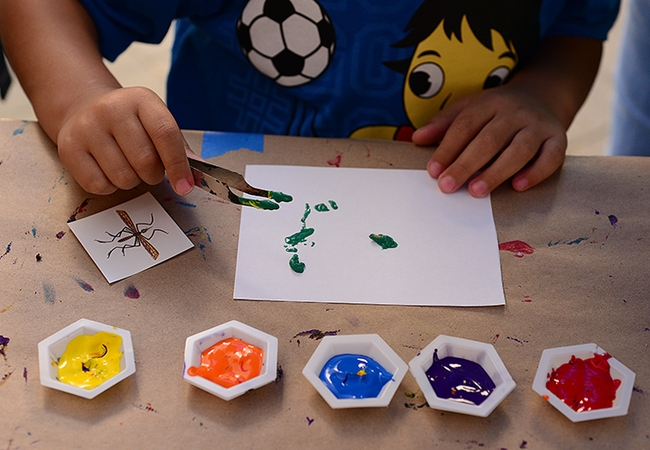
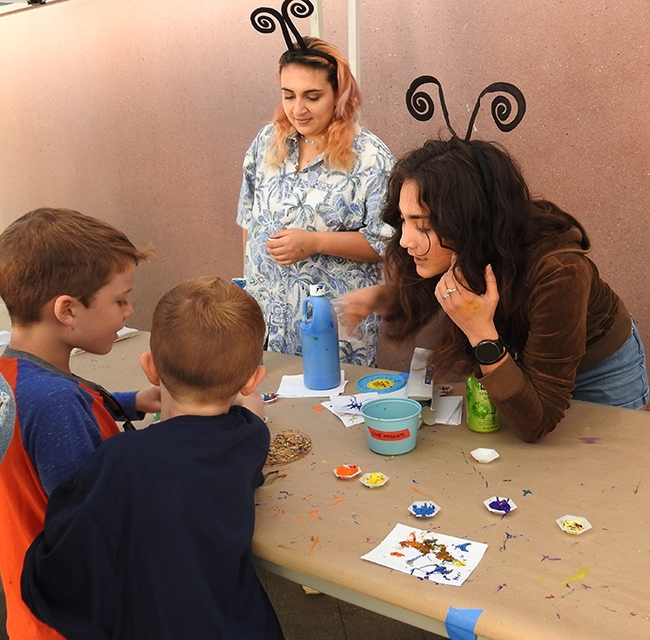
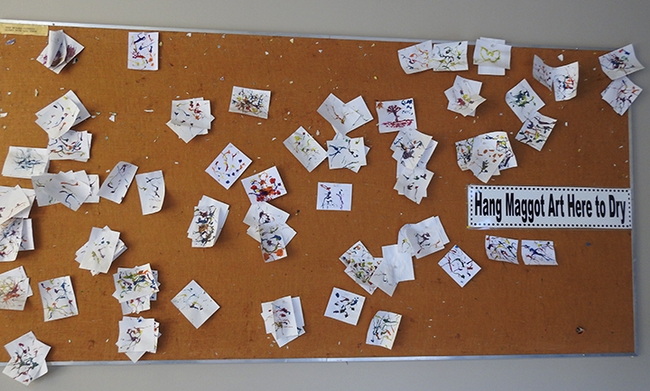
- Author: Kathy Keatley Garvey
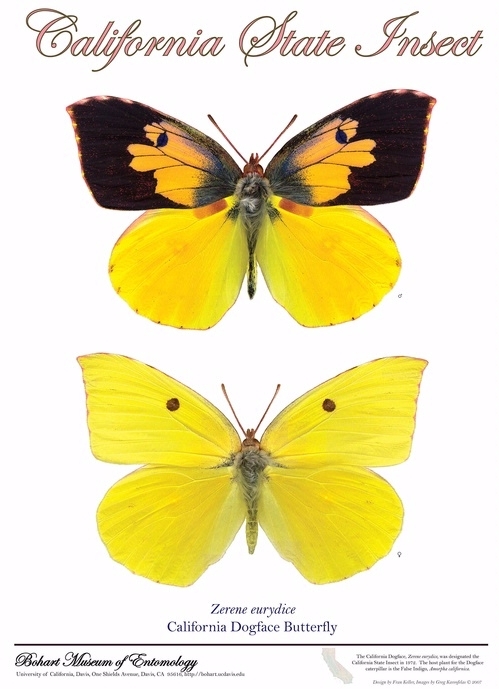
You may know that the California grizzly bear (Ursus californicus) is the official state animal.
You may know that the California quail (Lophortyx californica) is the official state bird.
You may know that the California red-legged frog (Rana draytonii) is the official state amphibian.
And you may know that the golden trout (Salmo agua-bonita) is the official state fish.
But...drum roll...did you know that California has an official state insect? No, it's not a lady beetle or ladybug. Or a honey bee. Or a monarch.
It's the California dogface butterfly (Zerene eurydice), which the state Legislature designated as the state insect 50 years ago--in 1972. The butterfly is found only in California from the foothills of the Sierra Nevada to the Coast Ranges and from Sonoma south to San Diego. The male, which sports a yellow silhouette of a dog's head on its wings, is known as "the flying pansy." The female is mostly solid yellow except for a single black spot on its upper wings.
The Bohart Museum of Entomology, located in the Academic Surge Building on Crocker Lane, will celebrate the 50th anniversary of the butterfly's designation as the state insect during the 108th annual UC Davis Picnic Day on Saturday, April 23. See the Bohart exhibits at the East Academic Surge entrance from 10 a.m. to 2 p.m.
Entomologist Fran Keller, a professor at Folsom Lake College, a Bohart Museum scientist, and UC Davis doctoral alumnus, will be there with Bohart associate Greg Kareofelas to share their expertise on the butterfly. Kareofelas is a volunteer tour guide for the Placer Land Trust's conservation site in Auburn. It's the most prevalent habitat of the butterfly; it is there because its larval host plant, false indigo (Amorpha californica) thrives there.
Kareofelas has reared--and photographed--a dogface butterfly from egg to adult. And he's also grown false indigo.
Keller authored a 35-page children's book, "The Story of the Dogface Butterfly," with images by Kareofelas and Keller and illustrations by then UC Davis student Laine Bauer. The book tells the untold story of the California dogface butterfly, and how schoolchildren became involved in convincing the State Legislature to select the colorful butterfly as the state insect.
A Bohart Museum poster by Kareofelas-Keller depicts the male and female butterfly. Both the poster and the book are available for sale in the Bohart gift shop (also online). Net proceeds benefit the insect museum's education, outreach and research programs.
In addition to the California dogface butterfly, the Bohart Museum's Picnic Day activities will focus on monarch butterflies; the traveling display exhibits that graduate students created; and the ever-popular live "petting zoo," comprised of Madagascar hissing cockroaches, stick insects and tarantulas.
Home of worldwide collection of eight million insect specimens, the Bohart Museum is directed by Lynn Kimsey, UC Davis distinguished professor of entomology. The staff includes senior museum scientist Steve Heydon; education and outreach coordinator Tabatha Yang, and entomologist Jeff Smith, who curates the lepidoptera collection.
Other entomological displays and activities during Picnic Day will take place at Briggs Hall from 9 a.m. to 5 p.m. A new addition at Briggs is caterpillar biology. Grace Horne, a graduate student in the laboratory of Emily Meineke, assistant professor of urban landscape entomology, will display hornworm caterpillars and pupae, and she'll discuss butterfly and moth biodiversity and biology, including urban biodiversity and their interactions with their host plants.
Links:
Capital Public Radio Piece on Dogface Butterfly (featuring Greg Kareofelas)
Pacific Land Trust website (PLT maintains a conservation site in Auburn that's the home of the California dogface butterfly)
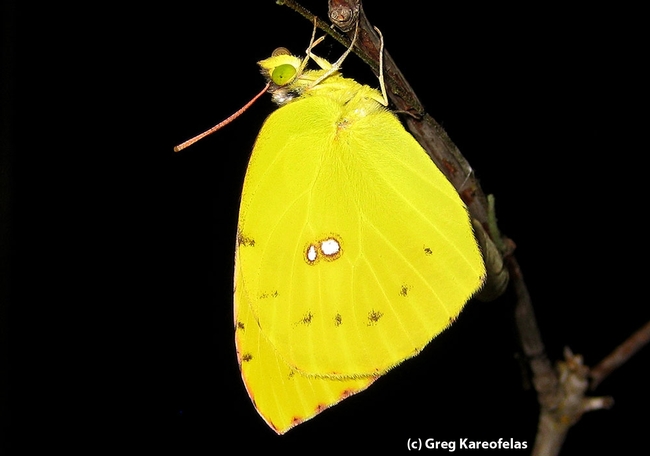
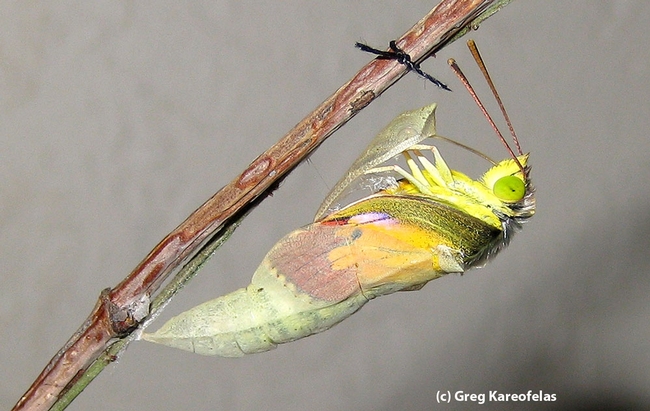
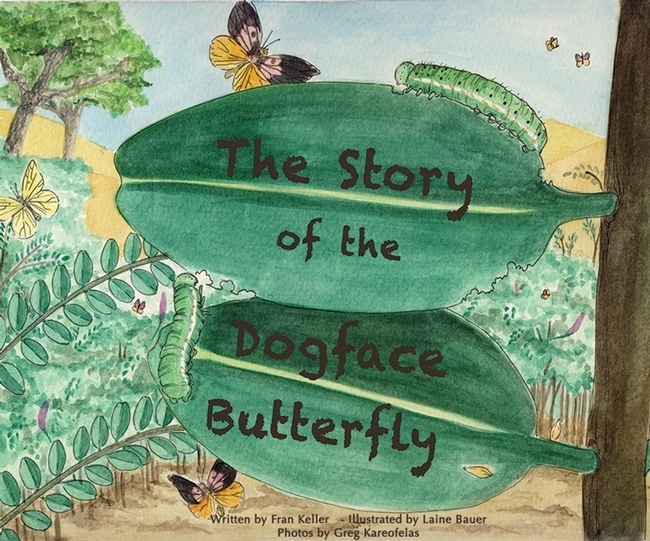
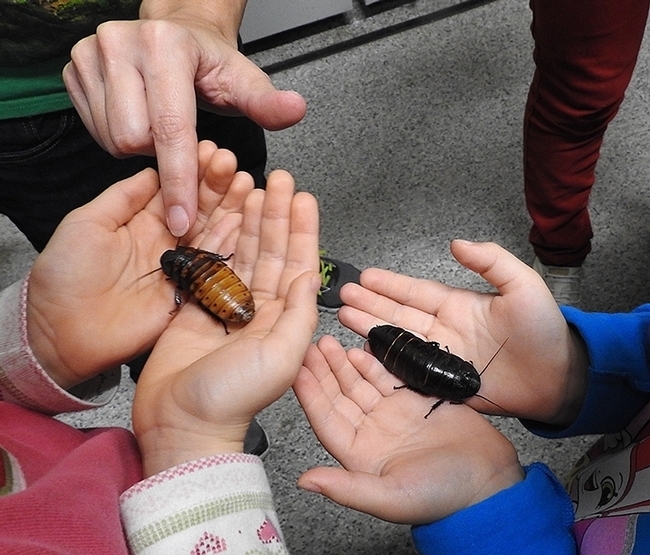
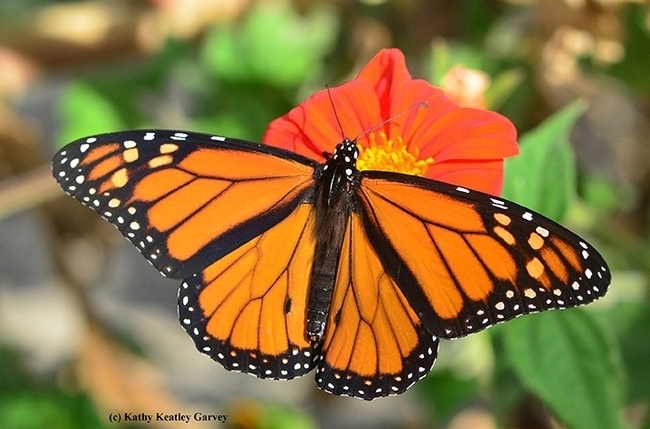
- Author: Kathy Keatley Garvey
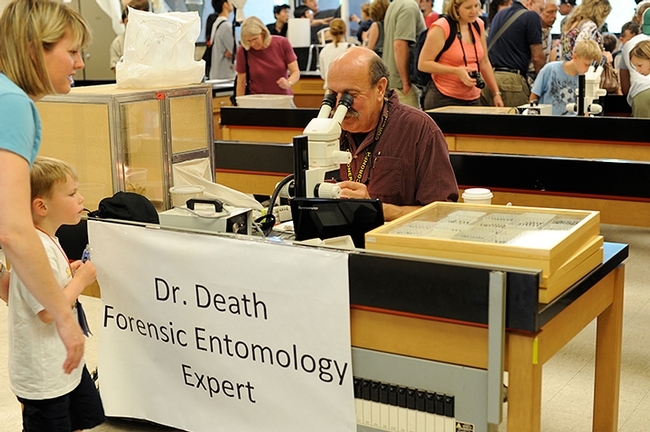
That would be forensic entomologist Robert "Bob" Kimsey of the UC Davis Department of Entomology and Nematology.
You'll learn how important entomology is in forensic investigations, you can chat with Dr. Bob, and you can look at some of his collections.
Kimsey wears a number of hats. He's the master advisor of the Animal Biology major; an assistant adjunct professor, UC Davis Department of Entomology and Nematology; and the faculty chair of the department's Picnic Day. He's also the advisor to the UC Davis Entomology Club and that includes guiding students to such venues as Alcatraz Island to see the flies and other insects. (See The Fly Man of Alcatraz)
Known as an outstanding teacher, advisor and mentor, Kimsey won the 2020 top faculty academic advising award from the international NACADA, the “global community for academic advising.”
Kimsey is also a 2019 winner of a faculty advising award from the College of Agricultural and Environmental Sciences, the Eleanor and Harry Walker Advising Awards. He previously won the UC Davis Outstanding Faculty Advising Award, and the Distinction in Student Mentoring Award from the Pacific Branch, Entomological Society of America.
Bob Kimsey's teaching philosophy: "I think that humans learn best together, where one person demonstrates the process or disseminates the knowledge to solve a problem to another person, and then together they solve the problem. The problem may be proximal and practical or abstract and conceptual. Following instruction, the teacher may participate with groups of students to solve problems, and there exist many other variations on teaching that adhere to this simple theme. But the principal components remain the same: demonstration or dissemination of knowledge followed by cooperative application. This is likely the most ancient of teaching concepts, and to the extent recent innovations in teaching method return to this simple process and replace simple lecturing, it continues to be the most effective."
Known for expertly guiding students toward career paths, and helping them meet challenges and overcome obstacles, Kimsey draws such unsolicited accolades on Rate My Professors as:
- “Dr. Kimsey is by far one of the best professors at UC Davis. His class never fails to entertain! You do need to put in the work to do well but it is very worth it! Dr. Kimsey truly cares about his students and wants to see them succeed and find a path that best suits them. Strongly recommend!”
- "This was the best class I've taken at UC Davis. You can tell that Dr. Kimsey really cares, and puts a lot of effort into his class.”
The campuswide UC Davis Picnic Day is free and open to the public. Kimsey's booth is an integral part of the UC Davis Department of Entomology and Nematology's insect-related displays and activities, set from 9 a.m. to 5 p.m. in Briggs Hall. You'll see everything from Roach Races to Maggot Art (also think medical, forest and agricultural entomology). Check out the line-up.
Over at the Bohart Museum of Entomology, located in the Academic Surge Building on Crocker Lane, Lynn Kimsey, a UC Davis distinguished professor of entomology, serves as the director. (Yes, the Kimseys are husband and wife.) The Bohart Museum displays will be at the east entrance of the Academic Surge Building. Scheduled from 10 a.m. to 2 p.m., the Bohart displays will center on the state insect, the California Dogface Butterfly; monarchs; and the student-created traveling display exhibits.
What's a picnic without bugs?
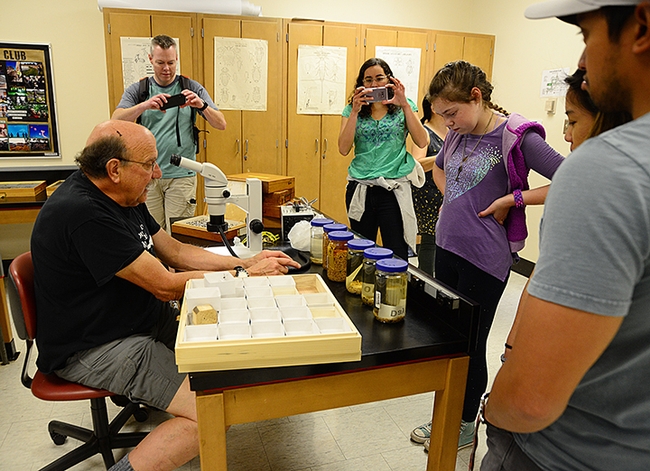
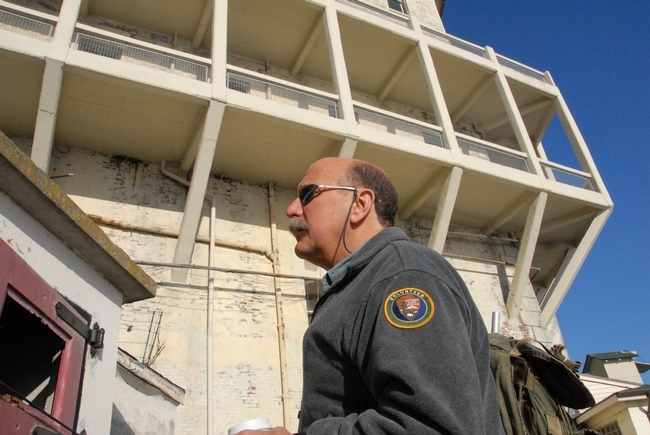
- Author: Kathy Keatley Garvey
Call them ladybugs, call them ladybirds, call them lady beetles, call them Coccinellidae, or just call them aphid eaters or deluxe aphid eaters.
And while you're at Briggs Hall, check out the insect-related displays and activities planned and coordinated by entomology doctoral candidate Danielle Rutkowski of the UC Davis Graduate Student Association. The events range from Roach Races (cheer on your favorite roach) to Maggot Art (dip a maggot in non-toxic, water-based paint and create a masterpiece worthy of framing--or at least, it can join your refrigerator art).
Bugs rule.
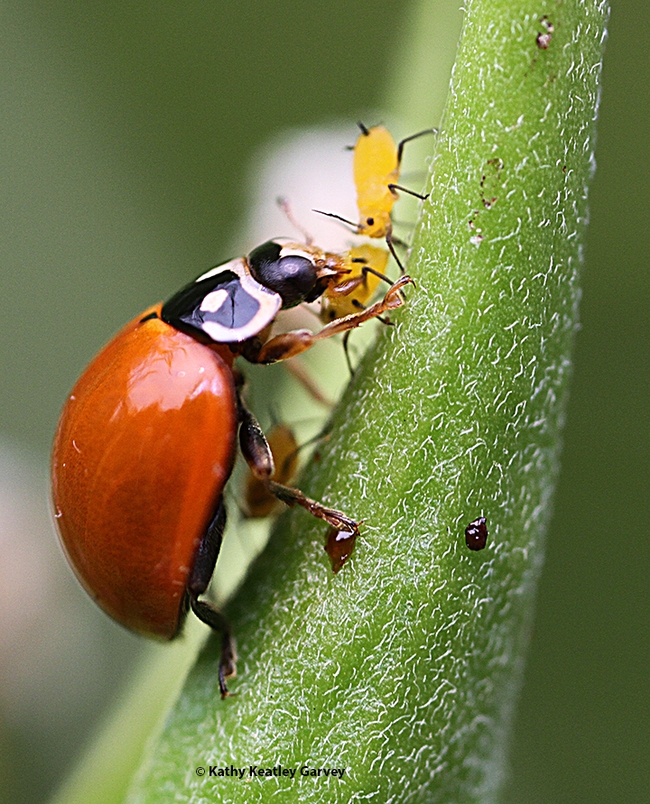
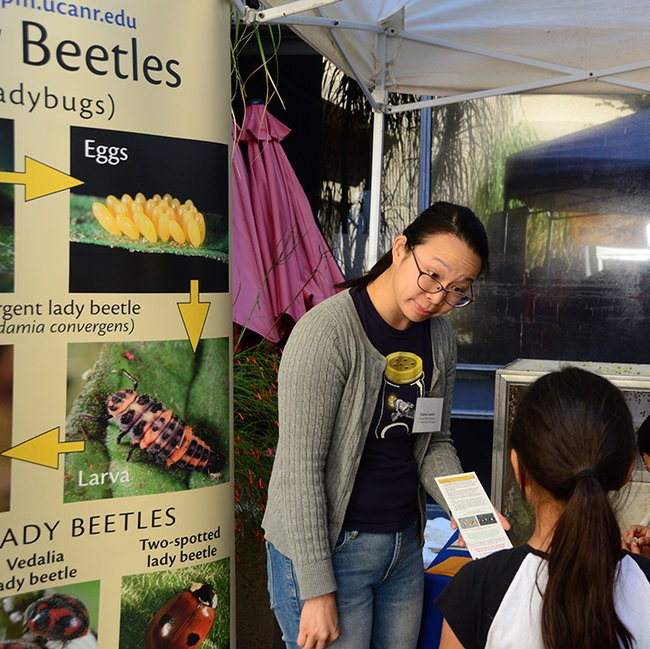
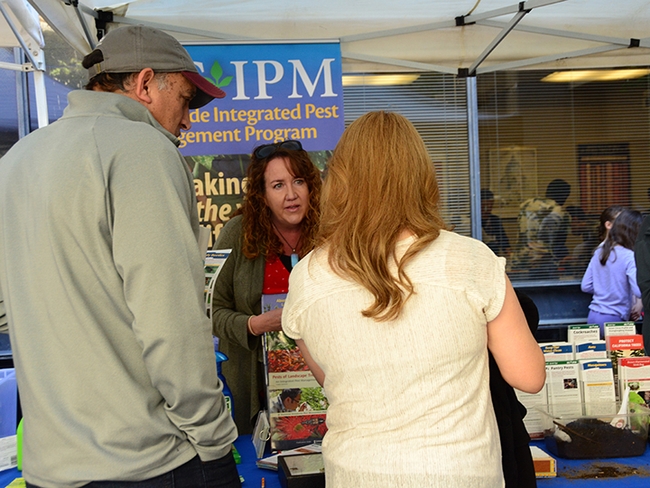
- Author: Kathy Keatley Garvey

Head over to the Bug Doctor booth staffed by UC Davis Department of Entomology and Nematology doctoral students on Saturday, April 23 at Briggs Hall during the 108th annual UC Davis Picnic Day.
The Bug Doctor will be in. Or, make that, the Bug Doctors will be in! They'll answer your questions, whether they're about ants, millipedes (arthropods), spiders (arthropods)--or such fan favorites as lady beetles (aka ladybugs), bees, butterflies, and dragonflies. Puzzled about a bug in your yard? Bring 'em in for identification!
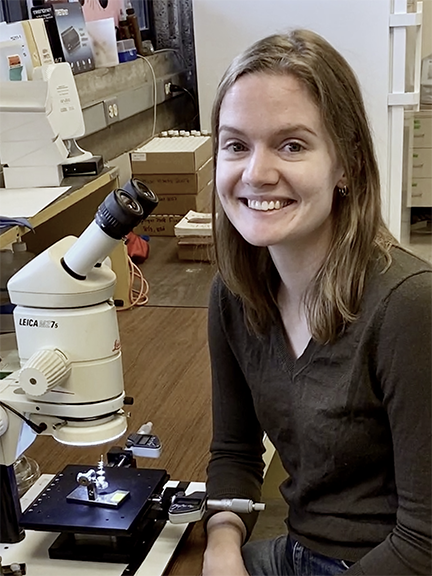
- Xavier Zahnle of the Jason Bond lab, 9 a.m. to 11 a.m.
- Zachary Griebenow of the Phil Ward lab, 11 a.m. to 3 p.m.
- Jill Oberski of the Phil Ward lab, 3 to 5 p.m.
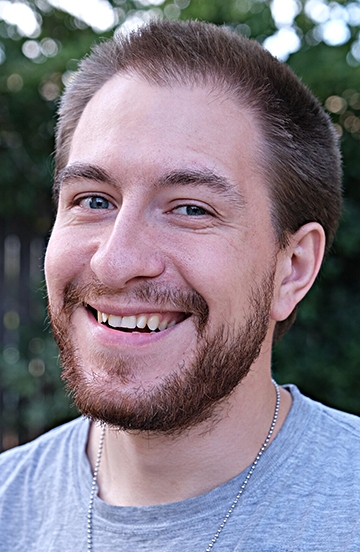
Griebenow just finished captaining the UC Davis Entomology Games Team that won the championship at the Pacific Branch, Entomology Society of America meeting. The team, comprised of Griebenow, Jill Oberski, Erin "Taylor" Kelly of the Geoffrey Attardo lab, and Madison Hendrick of the Ian Grettenberger lab, will now compete in the nationals during the Entomological Society of America meeting that takes place Nov. 13-16 in Vancouver, British Columbia.
So, what's your question?
- How do I keep ants from having a family reunion in my kitchen?
- What's the difference between a millipede and a centipede?
- What's an arthropod?
- What do millipedes eat?
- How many species of insects are there in the world? How many described species are there?
Ask away! And keep asking. Who knows, after you've finished talking to the Bug Docs, you may want to pursue a career in entomology.
Now about those ants having a family reunion in your kitchen....Should we give them name tags?
(Editor's Note: See the complete entomology schedule for UC Davis Picnic Day)
